Results 6,881 to 6,890 of 12094
Thread: Anandtech News
-
04-25-17, 07:12 AM #6881
Anandtech: The Windows 10 Creators Update Arrives
Windows 10 launched in July 2015, and on April 11, 2017, Microsoft released the third major update to their latest operating system. First announced in October with the Surface Studio, Microsoft has dubbed the latest update the Creators Update. Officially it is Windows 10 version 1703, OS build 15063. Naming it the Creators Update seems to signal some future intentions, but the actual release is less creative than the hardware they announced with it, and feels a bit like the company really just didn’t want to call it Windows 10 SP1 R2. Compared to the last major update, named the Anniversary Update, this version has less big features, but does bring a few new things to the OS along with some more polish.
More...
-
04-25-17, 07:12 AM #6882
Anandtech: ARM Announces Mali-C71: Their First Automotive-Grade Image Signal Processo
ARM’s success in the CPU IP field has and remains the cornerstone of the company, but it has not been a company that sits idle. Over the years – and especially in the smartphone boom of the last decade – ARM has been investing their profits into expanding their business into other fields, both software and hardware. Now this morning the company is making their big move in the Image Signal Processing (ISP) market, taking the wraps off of their first in-house ISP design: the Mali-C71.
ARM’s foray into the ISP market has been in the works for a bit now, and comes as a product of one of their 2016 acquisitions: imaging technology developer Apical. Picked up by ARM just under a year ago, Apical specialized in ISPs and computer vision technology, two growing markets for processor IP and two areas that meshed well with ARM’s own product plans, especially in the case of computer vision. With ARM further investing in their new imaging division to make Apical’s previous roadmap a reality, today the company is announcing the first imaging product developed and released as part of ARM.
While there are a significant number of ISPs in the market – it is a growing field, but a highly competitive one – what makes the Mali-C71 particularly notable is how aggressively ARM is going after the high-end of the market. Immediately swinging for the fences, ARM’s first in-house ISP is designed specifically for Advanced Driver Assistance Systems (ADAS) market. ADAS a lucrative market that the company is expecting to grow quickly, but also one with extensive reliability and safety requirements.
ARM expectation – and indeed much of the industry’s – is that cars are going to continue to have larger and larger numbers of processors and other electronics integrated into them. And while self-driving cars are obviously the end goal of this process, consumer products are still many years off. So ARM’s more immediate focus is on processor designs that would improve Level 1 and Level 2 driver assistance features, which brings us back to ADAS. The company is expecting the number of cameras in a given car to double (or more), and they want to be the vendor developing the processor IP that consumes all of that camera information.
The Mali-C71 then is the first of the company’s Mali-C series of ISPs, designed specifically for this task. From a feature standpoint it’s a high-end ISP, supporting 4 real-time (streaming) camera inputs and another 16 non-streaming inputs. Altogether the ISP can stream/process 1.2GPixels/second, about twice as many inputs and twice as much data as predecessor Apcial’s contemporary smartphone ISPs. And if that’s not enough, then multiple ISPs can be setup to work in tandem to handle more camera inputs and more overall pixels. The ultimate goal of the Mali-C71 being to efficiently and most appropriately processing imaging data so that it can be passed on to the driver and to other processors for true computer vision processing.
Raw specifications aside, however, a bigger part of ARM’s pitch to SoC developers and automakers is Mali-C71’s feature set, and this is where Mali-C71 is distinctly an ADAS-focused ISP. ARM is heavily focusing on both dynamic range and reliability features. The former being extremely useful to ADAS applications, and the latter being critical to getting anything on the road.
In the case of dynamic range, the Mali-C71 can handle a rather massive 24 stops of camera range via multiple exposures. Which from a more practical perspective means that it can process 16.8 million (2^24) light intensity levels. This is over twice as many stops as most smartphone ISPs and is even better than DSLRs, but more importantly it’s critical to ARM’s ADAS goals. Because cars need to see exceptionally well in the dark as well as in the light – and because the ultimate goal for many in the industry is to do all-visual (no LIDAR/RADAR) self-driving – C71 needs to support enough stops to capture and map a very large dynamic range.
The goal, in some ways, is to exceed human vision. Humans can see a rather wide range of intensities, but as anyone who’s driven at night can attest, we can’t see bright and dark at the same time. Supporting a large number of stops means that not only can ADAS systems see dark and light details at the same time – allowing computer vision processes to better understand what they’re seeing – but it can also quickly be tone mapped to something that can be displayed on a non-HDR (or at least not quite as HDR) automotive display for the drive.
The back-half of the feature set for the Mali-C71 then is focused on the reliability side of the equation, so that CV systems and ultimately automakers can trust what the C71 is reporting. A big part of this is ASIL D compliance, which is the most risk-averse level under the ASIL scheme. This means that as a processor the Mali-C71 needs numerous safeguards such as self-testing and numerous fault-detection circuits, but it also needs safeguards in place with respect to imaging. The latter comes in the form of an additional data layer the ISP provides, the consistency plane. A form of sorts of image metadata, the consistency plane is responsible for several tasks, including informing consuming processors about motion and whether any unusual data (e.g. a bright pixel) is accurate or if it’s an erroneous hot pixel. In the case of hot pixels it’s important to detect them and pass that information on to computer vision systems so that they can determine if they need to act on the bright pixel they’re seeing or if it’s something that can be ignored.
Moving on, while the focus of ARM’s announcement is on the ISP IP itself, the company is offering more than just hardware. Mali-C71 is intended to be a combined hardware + software product, with ARM also including a full reference software suite to go with the ISP. Customers will still want to tune the system to their specific needs – and ARM provides those tools as well – but it means that customers can hit the ground running with ASIL-compliant software as well.
Finally, although ARM isn’t naming specific partners, they have stated that the lead partner for Mali-C71 already has working sample silicon. Other partners are farther back at the design or licensing stage. Automotive electronics have a significant lag period in development – the hardware needs to be certified, and then it needs to continue to ship for a number of years – so unlike consumer gear, Mali-C71 is a long-term product for ARM’s chip partners and the eventual automaker customers. Even after chip designers adopt it and get it into shipping chips, it will likely be years until it finally shows up in retail cars, which highlights just how long of a game ARM is playing here by getting into ISPs for ADAS.
More...
-
04-25-17, 08:46 AM #6883
Anandtech: AMD Announces Radeon Pro Duo (Polaris) - Double Polaris for Content Creati
Back in 2016 AMD launched the Radeon Pro Duo, an interesting take on a semi-pro workstation card. As a dual-GPU Fiji card wasn’t going to be viable for the consumer market, AMD instead focused their attention on developing such a card for the professional content creation market, where the lack of VRAM would be less of an issue and the second GPU more of an asset. The resulting card was best geared for a niche market, but none the less an important one for the company.
Until now, I hadn’t seen any real statistics on how the Radeon Pro Duo was doing in the market or if AMD would follow-up on it with newer products. Now at the 2017 NAB Show we have our answer, as AMD has announced their second Radeon Pro Duo. This time powered by a pair of the company’s Polaris 10 GPUs, the latest Radeon Pro Duo is aimed at roughly the same market as the original, but with all of the improvements that Polaris has brought the consumer market in the past year.
Even though it goes after the same market as the last Pro Duo, the new Polaris-based Pro Duo is a much different card in a number of important ways, virtually all of which have to do with the differences in features and design between the previous Fiji GPU and the newer Polaris 10 GPU. Fiji was a high-end GPU that had to be reined in a bit to fit on a dual GPU card – and even then AMD needed a closed loop liquid cooler – whereas the Polaris 10 GPUs that go into the modern incarnation have a much more workable TDP from the start. Coupled with that, Polaris 10 doesn’t have the fixed VRAM capacity of Fiji, which means AMD can significantly increase the total VRAM. As a result, the new Pro Duo strikes a very different balance than the old card.AMD Workstation Card Specification Comparison AMD Radeon Pro Duo (Polaris) Radeon Pro WX 7100 AMD Radeon Pro Duo (Fiji) AMD Radeon R9 295X2 Stream Processors 2 x 2304 2304 2 x 4096 2 x 2816 Texture Units 2 x 128 128 2 x 256 2 x 176 ROPs 2 x 32 32 2 x 64 2 x 64 Boost Clock 1243MHz 1243MHz 1000MHz 1018MHz Memory Clock 7Gbps GDDR5? 7Gbps GDDR5 1Gbps HBM 5Gbps GDDR5 Memory Bus Width 2 x 256-bit 256-bit 2 x 4096-bit 2 x 512-bit VRAM 2 x 16GB 8GB 2 x 4GB 2 x 4GB Typical Board Power 250W 130W 350W 500W GPU Polaris 10 Polaris 10 Fiji Hawaii Architecture Polaris Polaris GCN 1.2 GCN 1.1 Manufacturing Process GloFo 14nm GloFo 14nm TSMC 28nm TSMC 28nm Launch Date 05/2017 10/2016 04/2016 04/21/2014 Launch Price $999 $649 $1499 $1499
By the numbers then, the Polaris-based Radeon Pro Duo is actually slower than the older Fiji version. It has a clockspeed advantage, but this isn’t enough to overcome Fiji’s total stream processor advantage. All told, at peak rates the new Pro duo is rated for 11.45 TFLOPs of FP32, while the Fiji version was rated for 16.38 TFLOPs. In practice however I don’t expect that the gap is quite so large, as Fiji would need to throttle more often, and Polaris enjoys at least a small architectural advantage.
What the new Pro Duo loses in throughput it more than picks up in VRAM. With each Polaris 10 GPU sporting a 256-bit GDDR5 memory bus, AMD has outfit each GPU with 16GB of VRAM, quadrupling their VRAM capacity. AMD’s photos don’t show the bare PCB, but I believe it to be a safe bet that AMD is running 8Gb modules in clamshell mode, meaning the board is truly maxed out. AMD argued that the smaller VRAM capacity of the Fiji based card was not a major liability last year, and while there’s admittedly no reason not to fully equip a Polaris 10 card since the company is back to GDDR5, I do think it’s an important step in making the new card more flexible.
The other big change here is that the TBP has come down significantly, from 350W to 250W. Fiji was powerful, but it was also power-hungry, necessitating the original card’s closed loop liquid cooler. The Polaris Pro Duo, on the other hand, can get away with a simple blower. In fact this is the first time we’ve seen a blower-type dual GPU card from AMD in many years. And though an uncommon choice for a dual GPU card, it makes a great deal of sense given the card’s professional workstation market, as blowers are expected there, and the Radeon WX cards are already similarly equipped.
Under the hood – and particularly catering to the NAB crowd – the move to Polaris means that AMD can now support DisplayPort 1.4 and HDMI 2.0b a significant step up from DP 1.2 and HDMI 1.4b on the previous card. Besides natively supporting contemporary HDMI and HDR displays, this means that AMD can now also drive 8K monitors using a dual-cable setup. All told, the new card comes with 3x DP 1.4 ports and a single HDMI 2.0b port, and can drive all 4 ports at once.
With their new card AMD will be going after the same content creation niche as the old card, which means a mix of video production and VR. The latter in particular is still a growth market for AMD, and the card’s two GPUs means that developers can take advantage of AMD’s Affinity Multi-GPU technology with only a single card. Though to be sure, AMD is positioning and promoting this more like their Radeon WX professional cards, so like its predecessor, the new card will get AMD’s pro drivers and limited official support for the major CAD, CAM, and other engineering software packages.
Wrapping things up, the Polaris-based Radeon Pro Duo will be launching next month at $999. For the moment at least, this puts it at the head of AMD’s professional cards, at least until a WX Vega card finally shows up.
More...
-
04-26-17, 09:17 AM #6884
Anandtech: Celebrating AnandTech’s 20th Anniversary: 1997 - 2017
This morning we’re celebrating a rather special occasion over here at AnandTech: our 20th anniversary. Though in a lot of ways it seems like the years have gone by in a flash, the calendar doesn’t lie: it means we’ve now been doing this for two decades, starting from a quaint CPU review in 1997 and branching out to oh so much more by 2017.
For the start of AnandTech’s 21st year in the technology news business, I’d like to commemorate the occasion with a look back at what we’ve done, a brief look forward at where we’re going next, and finally, thank the many readers and groups out there who have made it possible. I’m also happy to announce that we’re launching our largest hardware giveaway ever: over the next 20 days we'll be giving away hardware to celebrate our 20 years in business. So you'll want to check back daily for new giveaways.
More...
-
04-26-17, 09:17 AM #6885
Anandtech: AT20 Giveaway Day 1: AMD
For some of our past anniversaries we’ve done hardware giveaways, and for our 20th anniversary I wanted to do the best giveaway yet. It only seemed fitting that as a thank you to the readers that have supported us over the last two decades, that we try to give something back to you.
I set out with a goal to do 20 days of giveaways, one for each year of AnandTech’s existence. To do so, myself, the other editors, and the sales team reached out to our friends at hardware vendors across the globe to line up hardware for our greatest giveaway ever. The results exceeded even my wildest expectations.
31 vendors have donated hardware for the AnandTech 20th anniversary giveaway, smashing even my most optimistic goals. We still haven’t finished adding up the value of all of the prizes, but it’s tens of thousands of dollars. It’s honestly almost more than we could handle, if not for the hard work of the Purch community team in helping out to organize all of this.
So a big thank you goes out to our friends at Intel, AMD, HTC, NVIDIA, Seasonic, ARM, Asus, and more, for providing us with so many prizes to give out to you guys. I knew we had a lot of friends, but it’s only after you ask for free hardware to give to random readers that you realize just how many friends you have. And similarly, how these companies are eager to make a good impression with you.
Starting today and running through May 23rd, we’re doing 20 days of giveaways. We have CPUs, motherboards, phones, tablets, video cards, cases, power supplies, laptops, and even some bona fide swag to give away. Each giveaway is only open for 48 hours, so you’re going to want to check in each and every weekday to enter that day’s giveaway(s). Many will enter, not as many will win, but with the number of prizes we have available the odds may be more in your favor than you think.
However for our many international readers, I need to apologize. We’ve not been able to do international giveaways, and the 20th anniversary giveaway is no different. AnandTech/Purch is too big to do a clandestine giveaway, and that means we need to follow all of the relevant local laws on giveaways. And, as it turns out, there are a lot of countries out there who either dislike giveaways or require that someone in their country wins a giveaway in order for it to be offered there. As a result, we’re only able to open these giveaways to residents of the United States. I’m genuinely sorry we can’t offer anything outside of the United States, but I hope you can understand.
Anyhow, for our first giveaway I thought it was only appropriate that we go full-circle and start back where AnandTech itself started: AMD.
The AnandTech 20th Anniversary - AMD Giveaway
Altogether, AMD has given us 6 prizes to hand out: a Ryzen 7 1800X, a Ryzen 5 1600X, or one of four Radeon RX 570 video cards.
AMD Ryzen 7 1800X & Ryzen 5 1600X
The Ryzen 7 1800X and Ryzen 5 1600X are AMD’s top 8-core and 6-core processors respectively, forming the backbone of their new Ryzen CPU family. Marking a rather dramatic turnaround for the company in the CPU space, the Zen architecture has massively improved AMD’s IPC and overall single-threaded performance, changing the competitive landscape of the CPU space almost overnight.
As our own Ian Cutress put it in his Ryzen 5 review: “for anyone wanting to do intense CPU work, the Ryzen gets a nod here. Twelve threads are hard to miss at this price point”. AMD isn’t able to exceed Intel’s single-threaded performance, but the release of a powerful processor with so many cores has served to make the x86 market a lot more interesting.AMD Ryzen Prizes Cores/
ThreadsBase/
TurboL3 TDP Ryzen 7 1800X 8/16 3.6/4.0 16 MB 95 W Ryzen 5 1600X 6/12 3.6/4.0 16 MB 95 W
AMD Radeon RX 570
Meanwhile AMD also sent over 4 different Radeon RX 570 cards, each from one of their different board partners: Gigabyte, MSI, ASUS, and PowerColor.
- Gigabyte AORUS Radeon RX 570
- MSI Radeon RX 570 Gaming X
- ASUS ROG Strix Radeon RX 570
- PowerColor Red Devil Radeon RX 570
Gallery: AMD Radeon RX 570 Giveaway Cards



The Radeon RX 570 is AMD’s recently-launched SKU for mainstream 1080p gaming. The cards all offer 32 CUs, 4GB of VRAM, and clockspeeds of 1244MHz or better.
All of the cards are open air type coolers, with 3 of the cards using a dual fan configuration, while PowerColor’s card takes it up a notch with three fans.
In our review of the RX 570, we found that the cards put up good numbers for a 1080p card, and should be able to handle 1080p gaming with few-if-any compromises, making it the cornerstone of an excellent gaming PC.
More...
-
04-27-17, 07:57 AM #6886
Anandtech: AT20 Giveaway Day 2: An HTC U Ultra 64GB for You
Continuing our 20 day celebration of AnandTech’s 20th anniversary, we’re now on Day 2 of our giveaways.
If yesterday’s AMD gear didn’t catch your fancy, then perhaps today’s will with our first mobile-focused giveaway. For today’s giveaway the awesome crew over at HTC has sent over one of their unlocked 64GB HTC U Ultra phones, the company’s current flagship smartphone.
The AnandTech 20th Anniversary Celebration - HTC Giveaway
The HTC U Ultra is a 5.7-inch phone that incorporates Qualcomm’s Snapdragon 821 SoC, along with an X12 modem, 4GB of LPDDR4 RAM, 64GB of UFS 2.0 flash storage, a 12MP “UltraPixel 2” camera with OIS, a 2560x1440p LCD paired with a 160x1040 LCD for the bezel, and a 3000 mAh battery. In terms of build quality, the HTC U Ultra uses aluminum frame paired with a curved glass back, and Gorilla Glass 5 for the screen on the front. Our own Matt Humrick had a chance to get hands-on with the HTC U Ultra back at CES 2017, in case you’re looking for further details and impressions.
This specific phone is their unlocked model for the US, which means it’s primarily designed for use on AT&T and T-Mobile’s networks. Though it should work on most other GSM networks too, with LTE coverage depending on what bands a carrier uses. For those curious, the specific LTE bands supported by this phone are:HTC U Ultra Specs SoC Qualcomm Snapdragon 821
(MSM8996 Pro AB)
2x Kryo @ 2.15GHz
2x Kryo @ 1.59GHz
Adreno 530RAM 4GB LPDDR4 NAND 64GB (UFS 2.0)
+ microSD (SDXC)Display 5.7-inch 2560x1440 IPS LCD
2.0-inch 160x1040 IPS LCDDimensions 162.41 x 79.79 x 3.60-7.99 mm
170 gramsModem Qualcomm X12 LTE (Integrated)
2G / 3G / 4G LTE (Category 12)
FDD-LTE / TD-LTE / WCDMA / GSMSIM Size 1x NanoSIM Front Camera 16MP, UltraPixel, f/2.0, Auto HDR Rear Camera 12MP, 1.55µm pixels, f/1.8, PDAF + Laser AF, OIS, Auto HDR, dual-tone LED flash Battery 3000 mAh
non-replaceableWireless 802.11a/b/g/n/ac, BT 4.2, NFC, GPS/GNSS/Beidou Connectivity USB 3.1 Type-C Launch OS Android 7.0 with HTC Sense
FDD: Bands B1/B2/B3/B4/B5/B7/B8/B12/B17/B20/B28
TDD: Bands B38/B39/B40/B41 with 2CA, 3CA
Finally, as with our other giveaways, today’s giveaway is only open for 48 hours, so be sure to enter soon. However please note that for legal reasons, we’re only able to open these giveaways to residents of the United States.
Good luck everyone! And be sure to check in tomorrow for our next giveaway.
More...
-
04-27-17, 09:13 AM #6887
Anandtech: Skylake-SP Xeon List Published: Moving from E7/E5 Naming to Xeon Gold and
Presumably by accident, Intel this week has published a list of its upcoming processors that belong to the soon-to-launch Skylake Xeon families. The names were published by Intel in a PCN, or Product Change Notification, which makes it likely that this was an accidental disclosure.
In the PCN, it details that LGA3647 CPUs (which covers Xeon Phi processors and the upcoming Skylake Xeons) will have an arrow indicating which way processors should be oriented in the socket. It seems like an arbitrary PCN, just printing an arrow on a heat spreader, which makes this published list somewhat unexpected. But these names show the key parts of the Purley platforms for servers.
One of the poorly kept secrets in the industry over the last few weeks is that Intel is changing the nomenclature of its Xeon CPUs going forward. This will be a difficult change to explain, given that users are so familiar with the previous naming system, and the translation between old and new is not a simple one-to-one mapping. Skylake-SP thus introduces the new Xeon Gold and Xeon Platinum lineups for different markets of servers. We expect all these CPUs to be on LGA3647, given that the PCN seems to suggest that this singular print marking on the heatspreader was not on this socket design before.
Unfortunately, the published list does not have full CPU information, but we do get names and frequencies of 34 Skylake-SP processors (see details below) that will belong to the Xeon Gold and Xeon Platinum lineups, as well as the fact that these processors are designated with the H0 stepping. We might not see all these processors at launch (which at this time has still not officially been announced), and we expect Intel to expand the Xeon Gold/Platinum family with new models over the several quarters following the launch.
Based on the document, the initial Xeon Gold family will consist of 20 processors featuring 5000- and 6000-series model numbers. The Xeon Platinum lineup will feature 14 chips belonging to the 8000-series.
Most importantly, the PCN confirms that Intel is about to scrap its Xeon E5/E7 naming nomenclature for something different with the introduction of the Skylake-SP/EP processors. Instead of E5 and E7, Intel will call its CPUs for 2P and 4P/MP servers Xeon Gold and Xeon Platinum. Moreover, the feature-sets of chips aimed at different kinds of servers will also be different, just like today. The upcoming Xeon Gold CPUs will work in 2P configurations and will thus replace the existing Xeon E5-series. Meanwhile, it is logical to assume then the replacement for the Xeon E7 will be called the Xeon Platinum, and apart from higher maximum core count will also support various additional capabilities, including RAS features. We suspect that there will be more names than Gold and Platinum coming to market to cover other aspects of Intel's product stack.Basic Specifications of Intel Xeon Gold and Platinum CPUs Model Freq.
(Base)Product
CodeS-Spec Xeon Platinum 8180M 2.5 GHz CD8067303192101 SR37T Xeon Platinum 8180 CD8067303314400 SR377 Xeon Platinum 8176M 2.1 GHz CD8067303133605 SR37U Xeon Platinum 8176 CD8067303314700 SR37A Xeon Platinum 8170M CD8067303319201 SR3BD Xeon Platinum 8170 CD8067303327601 SR37H Xeon Platinum 8168 2.7 GHz CD8067303327701 SR37J Xeon Platinum 8164 2.0 GHz CD8067303408800 SR3BB Xeon Platinum 8160T 2.1 GHz CD8067303592800 SR3J6 Xeon Platinum 8160M CD8067303406600 SR3B8 Xeon Platinum 8160 CD8067303405600 SR3B0 Xeon Platinum 8158 3.0 GHz CD8067303406500 SR3B7 Xeon Platinum 8156 3.6 GHz CD8067303368800 SR3AV Xeon Platinum 8153 2.0 GHz CD8067303408900 SR3BA Xeon Gold 6154 3.0 GHz CD8067303592700 SR3J5 Xeon Gold 6152 2.1 GHz CD8067303406000 SR3B4 Xeon Gold 6150 2.7 GHz CD8067303328000 SR37K Xeon Gold 6148 2.4 GHz CD8067303406200 SR3B6 Xeon Gold 6142M 2.6 GHz CD8067303405700 SR3B1 Xeon Gold 6142 2.6 GHz CD8067303405400 SR3AY Xeon Gold 6140M 2.3 GHz CD8067303405500 SR3AZ Xeon Gold 6140 2.3 GHz CD8067303405200 SR3AX Xeon Gold 6138T 2.0 GHz CD8067303592900 SR3J7 Xeon Gold 6138 2.0 GHz CD8067303406100 SR3B5 Xeon Gold 6136 3.0 GHz CD8067303405800 SR3B2 Xeon Gold 6134M 3.2 GHz CD8067303330402 SR3AS Xeon Gold 6134 3.2 GHz CD8067303330302 SR3AR Xeon Gold 6132 2.6 GHz CD8067303592500 SR3J3 Xeon Gold 6130T 2.1 GHz CD8067303593000 SR3J8 Xeon Gold 6130 2.1 GHz CD8067303409000 SR3B9 Xeon Gold 6128 3.4 GHz CD8067303592600 SR3J4 Xeon Gold 6126T 2.6 GHz CD8067303593100 SR3J9 Xeon Gold 6126 2.6 GHz CD8067303405900 SR3B3 Xeon Gold 5122 3.6 GHz CD8067303330702 SR3AT
In the processor stack above, we also get T and M processors in the mix. T processors have historically been lower power processors, and this is likely still the case given that the T processors have lower frequencies than most of the rest of the CPUs. Some CPUs, like the Xeon Gold 6130 and 6130T, are at 2.0 GHz for both: this is likely relating to different turbo frequencies, but also the T product is binned for lower power. The M processors are somewhat of a mystery, as we've never had M on a processor before, except in mobile. Speculating a bit on our part, this could be a reference to MCDRAM, which is a feature we see on Xeon Phi processors. Although to be clear, we have nothing to suggest that Intel will be including MCDRAM on these parts, as the Xeon CPU die itself may be big and the MCDRAM silicon is also relatively sizeable. We suspect that the M processors will have a given feature or features in common, which might come at an extra expense in the final price tag.
In previous generations, Intel typically creates three different core designs for it's latest Xeons: a low core count (LCC), medium/high core count (MCC/HCC, depending on the document), and an extreme core count (XCC) version. The XCC version has the highest amount of cores, the most cache, and costs the most, but typically the per-core frequency is low. Intel sometimes offers the XCC in a small core count configuration, but with a large cache, and something like the Xeon Platinum 8156 at 3.6 GHz most likely fits that description. One of the things that should seem obvious is that the naming of each processor is not linear with clock frequency. For example, the Gold 6150 runs at 2.7 GHz base, but the Gold 6152 runs at 2.1 GHz base. Using that fourth digit extensively means that we hope Intel has a strong and obvious way to describe which part of the CPU names mean specific things. At this point it is hard to see a specific pattern, given we do not know core counts.
Disclaimer: There's a significant amount of information in the ecosystem about the upcoming Skylake-SP platform, mostly from leaks that we can't personally confirm. So while we appreciate there is information out there, we've kept this analysis specifically to what is confirmed or could be inferred, as per AnandTech policy.
More...
-
04-27-17, 10:26 AM #6888
Anandtech: Razer Announces The Lancehead Gaming Mice
Today Razer is launching a pair of gaming mice into their lineup. The Razer Lancehead Wireless Gaming Mouse, and the Razer Lancehead Tournament Edition are the two new models, and perhaps just as interesting is that they are also announcing a new version of their configuration software, dubbed Razer Synapse Pro, which is currently in beta. Both of the new mice feature an ambidextrous body, which should please those who prefer using the mouse with their left hand, and of course both mice support Razer's Chroma lighting.
First up is the Lancehead Wireless Gaming Mouse. Wireless mice have come a long way, but they can still have issues in a group environment due to interference on the frequencies the radios operate at. This has been an ongoing issue since the dawn of time, and there are various methods to combat this. Razer is announcing a new technology in their repertoire to try to assist with these issues, and they are calling it Adaptive Frequency Technology (AFT). None of this is new science of course, since frequency hopping is par for the course, but Razer is advertising their AFT should help with latency by choosing the strongest interference-free channel when it starts, and only hopping when necessary. There’s nothing really unique about doing this, but with good error correction it should help. Razer is claiming that it outperforms every other wireless gaming mouse. Frankly it would be nice to see some of these devices move off of the extremely crowded 2.4 GHz frequency altogether, and with the relatively short distance from a mouse to a PC, it’s strange that they stick with the 2.4 GHz band.
In addition to the wireless component, the Lancehead comes with a 16,000 DPI sensor with 210 inches-per-second tracking and it can handle up to 50 G of acceleration. It also features mechanical mouse switches that Razer co-developed with Omron, and Razer is claiming lower latency on the clicks, as well as up to 50 million clicks of durability.
The second mouse is similar to the first, but ditches the wireless connection for a USB cable. The Razer Lancehead Tournament Edition also supports up to 450 inches-per-second of speed, and the same 16,000 DPI and 50 G acceleration as the wireless model.
Razer is also announcing the new Razer Synapse Pro software, which will be released soon. The Lancehead owners will be the first to get a chance to use the new software. Synapse Pro supports both cloud and on-device storage for mouse settings, which is a welcome change from the existing software, which requires an online account to sync the mouse settings, and do most of the other configuration. The new Synapse Pro will allow a user to access their device profile on any computer without requiring an internet connection. Finally.
Razer will be offering the new mice for pre-order now, with shipments of the Tournament Edition starting now with worldwide availability in April/May, and the Lancehead Wireless Gaming Mouse will be available in the May/June timeframe. Pricing starts at $79.99 USD for the wired version, and $139.99 for the wireless model.
Source: Razer
More...
-
04-27-17, 01:06 PM #6889
Anandtech: LaCie Announces 2big Dock: 2-Bay TB3 DAS with Card Reader, USB-A and Displ
LaCie this week has taken the wraps off of the latest member of their family of DAS devices, the 2big Dock. The newly revealed dock is their first Thunderbolt 3/USB-C-enabled dock, offering the latest in connectivity for laptops and PCs. Operating as both a DAS and a TB3/USB-C hub, the 2big Dock integrates two high-performance hard drives while offering a card reader, a USB 3.0 Type-A port, and a DisplayPort (1.2). The 2big Dock offers up to 20 TB capacity with a sequential read/write speed of up to 440 MB/s.
Like their prior Thunderbolt 2 docks, LaCie is aiming to fully leverage the capabilities and intended use cases for Thunderbolt-equipped laptops. As discussed multiple times, modern high-end laptops are so thin that it in many cases it is physically impossible (or very complicated) to install full-sized USB Type-A or DisplayPort headers on them and sometimes there is no space for memory card readers in the chassis (this is the case with Apple’s MacBook and MacBook Pro, HP’s Spectre and some other), which means that many people need docking stations to fulfill their connectivity needs.
LaCie is a well-known name in the DAS business, however prior to now they've never done anything approaching a dock. So as you'd expect for a company whose core strength is in the storage business, the company has opted to build an entry-level DAS that also doubles as a Thunderbolt 3 dock. All-told, the 2big Dock offers card reader supporting SD and CompactFlash cards, a DisplayPort, a USB 3.0 Type-A port, and a USB 3.0 Type-C port with power delivery, while allowing the Dock to be used with both Thunderbolt 3 and pure USB-C host devices.
LaCie is going to offer three versions of the 2big Dock DAS: with 12 TB, 16 TB and 20 TB capacities, all based on the Seagate IronWolf Pro enterprise-class drives for NAS. The DAS fully supports RAID 1 and RAID 0 capabilities for two HDDs — so owners can ensure either maximum reliability for their data (by mirroring them), or double their sequential read/write speeds up to ~440 MB/s (by striping them). LaCie does not disclose the exact controller it uses to enable hardware RAID functionality, but it is logical to assume that it is the ASMedia ASM1092R chip, which has two device ports and one host SATA port (and which was used in the previous-gen 2big DAS). As for controllers for the docking station, the manufacturer also remains tight-lipped and we do not know what kind of bridges are used for PCIe and SATA bridging, PCIe and USB bridging, or the card reader.
Just like many other Thunderbolt 3 devices, the 2big Dock has two TB3 headers in a bid to daisy chain other TB3 devices, such as displays or special-purpose hardware. The 2big Dock DAS is also compatible with the previous-gen computers featuring Thunderbolt 2 ports (e.g., Apple’s Mac Pro and MacBook Pro) via a special adapter from Apple.The LaCie 2big Dock with Thunderbolt 3 and USB-C 12 TB
STGB1200040016 TB
STGB1600040020 TB
STGB20000400Number of Bays 2 hot-swappable bays for 3.5" HDDs HDD Interface SATA 6 Gbps HDDs Used Seagate IronWolf Pro Capacity RAID 0: 12 TB
RAID 1: 6 TBRAID 0: 16 TB
RAID 1: 8 TBRAID 0: 20 TB
RAID 1: 10 TBRAID 0/1/JBOD RAID0 ~440 MB/s RAID1 214 MB/s RAID Controller ASMedia ASM1092R (?) Ports 2 × Thunderbolt 3
1 × USB 3.0 Type-A
1 × USB 3.0 Type-C
1 × DisplayPort (version unknown)
1 × SD card reader
1 × CF card readerPSU external Cables Included Thunderbolt 3 40Gb/s USB-C to USB-C cable
USB-A to USB-C (5 Gbps) cableSoftware LaCie RAID Manager Price (MSRP) unknown unknown unknown
The LaCie 2big Dock will be available this summer and will be covered by the company’s five-year warranty. Pricing is not announced, but since we are talking about a dual-bay DAS, it is not going to be astronomical. At least, expect the 20 TB version to be considerably more affordable than the 6big 24 TB ($3000).
Gallery: LaCie 2big Dock





Related Reading:
- LaCie Launches Rugged and d2 Thunderbolt 3 Storage Devices
- LaCie Announces Bolt3: 2 TB External SSD at 2.8 GBps over Thunderbolt 3
- LaCie Launches 6big and 12big: Up to 60/120 TB External Storage with Thunderbolt 3
- HighPoint RocketStor 6618 Thunderbolt 3 DAS: 8-Bays, Up to 96 TB, 2.7 GB/s, $999
- QNAP at CES 2017 - Thunderbolt 3 and Xeon D NAS Units, Residential Gateways, and More
- Promise Launches Pegasus3 External Storage via TB3: Up to 48 TB, 1.6 GBps
More...
-
04-27-17, 04:17 PM #6890
Anandtech: Micron Hires New CEO: Sanjay Mehrotra, SanDisk Co-Founder And Former CEO
In February, Micron CEO Mark Durcan announced his retirement after three decades with the company. Durcan had previously announced plans to retire in 2012 while serving as the company's president, but the death of then-CEO Steve Appleton prompted Durcan to postpone his retirement indefinitely to serve as Micron's CEO. Micron's board of directors has now selected Sanjay Mehrotra to be the new president and CEO of Micron. Durcan will step down and be replaced by Mehrotra effective May 8, 2017.
Mehrotra's background includes co-founding SanDisk in 1988 and serving as its president and CEO from 2011 until its acquisition in 2016 by Western Digital. Prior to serving as CEO of SanDisk, Mehrotra had been the chief operating officer, head of engineering and chief of product development. Under Mehrotra's leadership SanDisk's annual revenue peaked at $6.6 billion and the company sold for $16 billion in 2016 to Western Digital. With long experience leading a major memory manufacturer, Mehrotra is one of the most highly-qualified candidates possible to take over at Micron.
Outgoing CEO Mark Durcan will be stepping down as CEO and from the board of directors effective May 8 but plans to stay on as an advisor until early August. Mehrotra plans to divide his time between Micron headquarters in Boise, Idaho and Micron's Silicon Valley offices in Milpitas, California, a few blocks from SanDisk headquarters.
More...
Thread Information
Users Browsing this Thread
There are currently 12 users browsing this thread. (0 members and 12 guests)





 Quote
Quote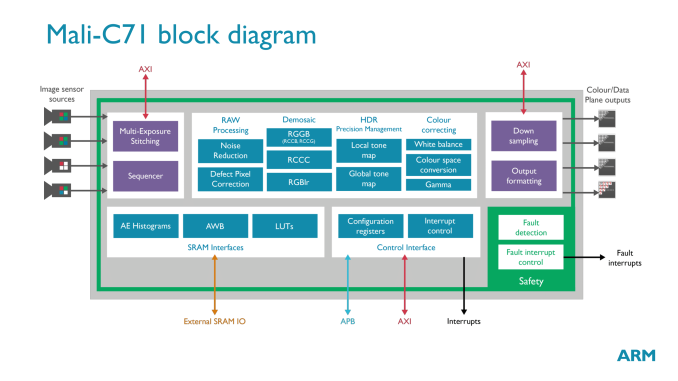
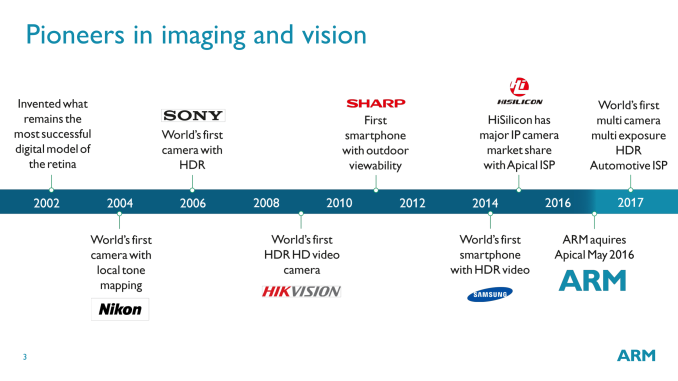



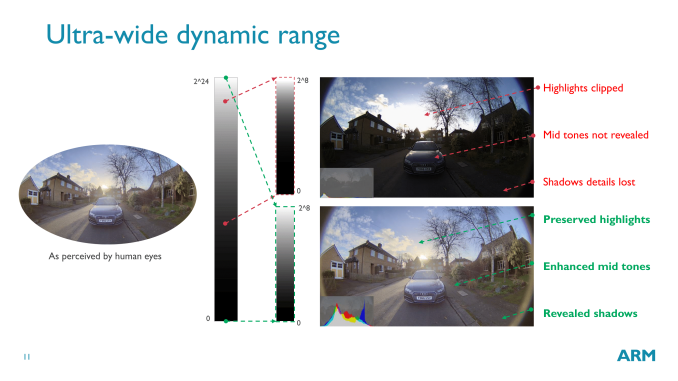
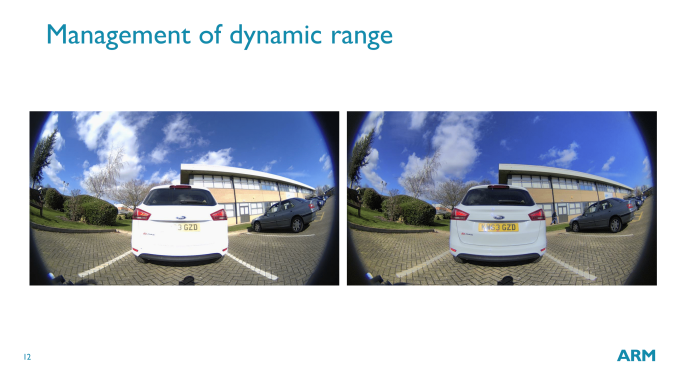
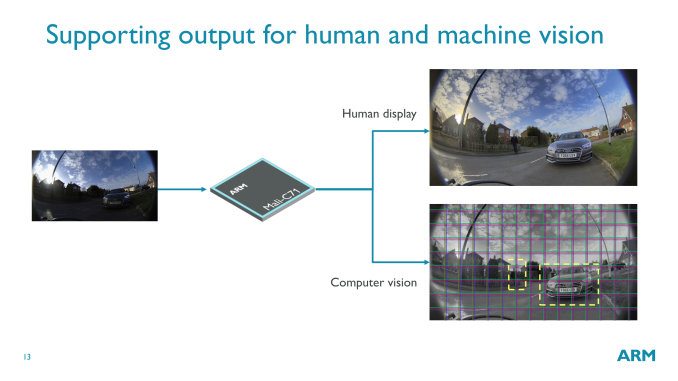

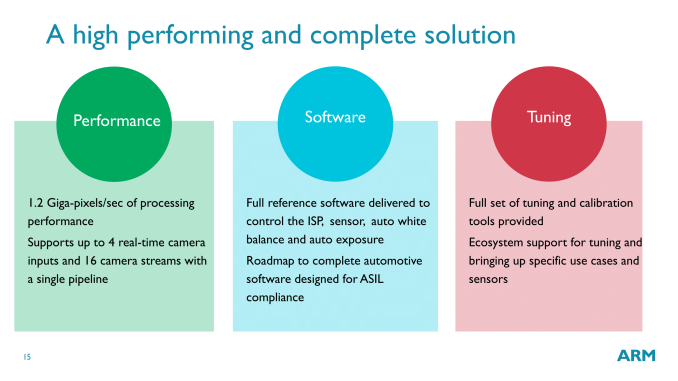

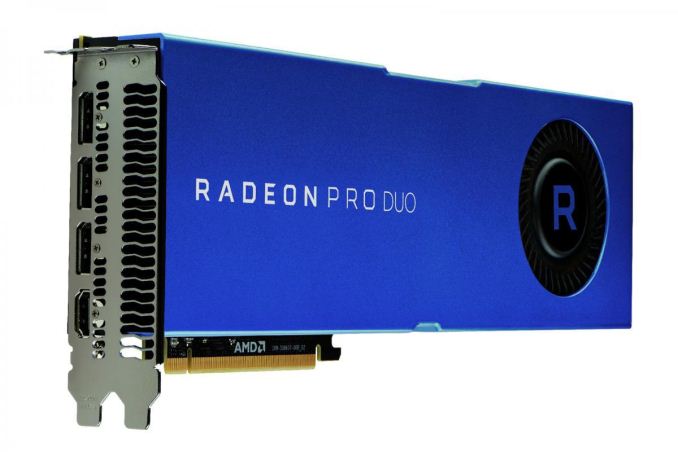




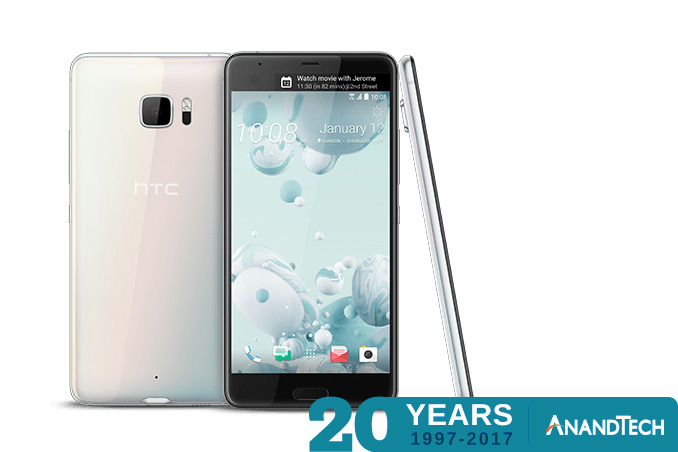


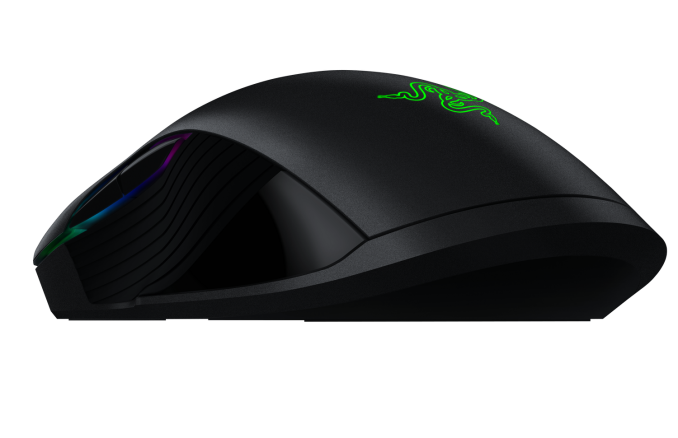
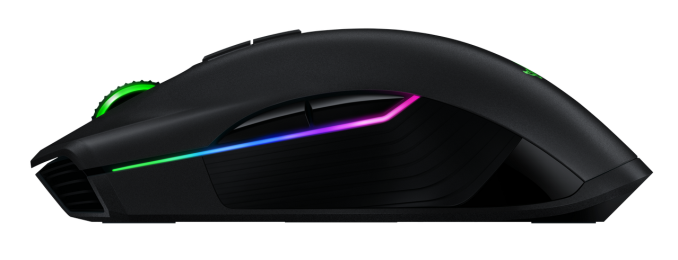
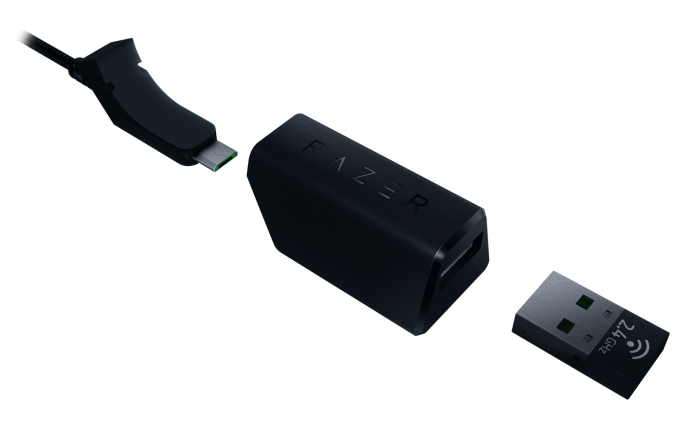
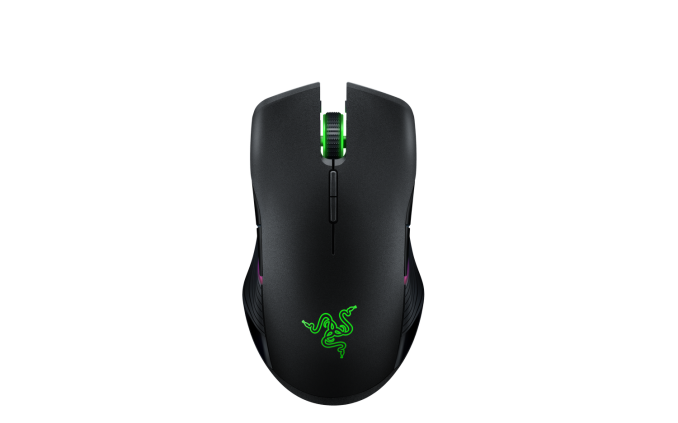

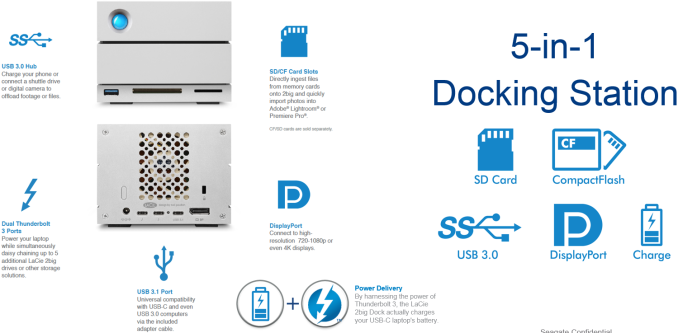
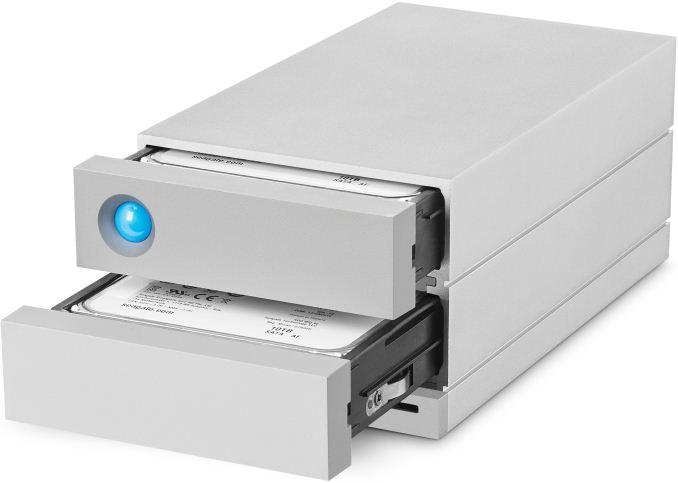
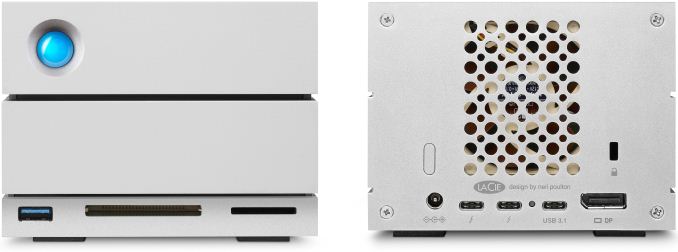
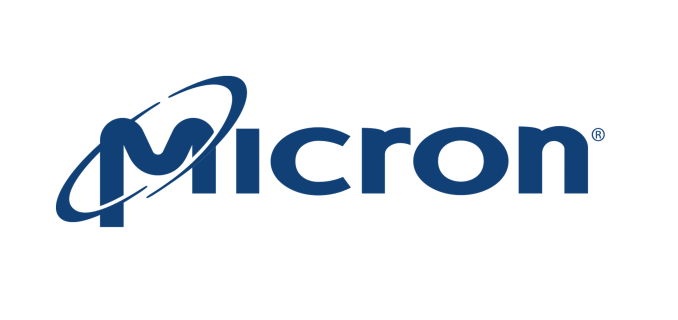

















Bookmarks